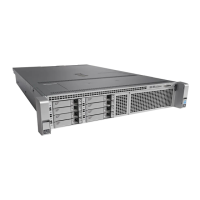• Meets Open Compute Project’s Remote Machine Management requirements
• Based on widely-used standards for web APIs and data formats
Redfish
™
can support an entire range of server architectures, right from monolithic servers to converged
infrastructure and hyper-scale architecture. The Redfish
™
data model is vendor neutral, and defines its own
structure and format of data that comprises server status, inventory and existing operational functions. You,
as an administrator can then automate management scripts to manage any Redfish
™
compliant server, resulting
in the efficient operation of a heterogeneous server fleet.
In terms of security, Redfish
™
offers a highly secure and reliable communication opportunity with its use of
HTTPS encryption as opposed to conventional management protocols. You can convey all Redfish
™
network
traffic, including event notifications across the network in an encrypted packet, reducing threats significantly.
Key Technologies
HTTPS Communications
The Hypertext Transfer Protocol or HTTP is an application protocol for distributed, collaborative, hypermedia
information systems and forms the foundation of data communication for the World Wide Web. Secure HTTP
or HTTPS is a secure version of HTTP that enables secure communications by operating HTTP within a
network connection encrypted by TLS or SSL. By utilizing HTTPS, Redfish
™
significantly enhances the
security of server management especially in comparison to legacy server management protocols.
RESTful Application Programming Interface
Representational State Transfer (REST) or RESTful API is a programming interface that uses the HTTP
request to retrieve information with the help of GET, POST, and DELETE data. Many IT companies use the
RESTful architecture. Leveraging this standardized approach, Redfish
™
implements a RESTful API for
accessing management information and for issuing commands to change the configuration or operational state
of a server.
Operational Model
Redfish
™
operations are initiated by a client using HTTPS for GET, POST, PATCH and DELETE operations
and are capable of interpreting JSON responses from the managed server. The responses provide the requested
information and indications of success or failure of the requested operation.
Redfish
™
Client
RESTful API goes by the principle "Everything is a Resource". This means that every Uniform Resource
Identifier or URI represents a resource of a specific type - a service, a collection or an individual entity. Within
the Redfish
™
context however, a resource can be thought of as the content of the HTTPS message returned
when accessing a URI. A variety of REST Clients can be used for gaining access to Redfish
™
resources such
as:
• Applications such as the “Advanced REST Client” and “Postman” from the Google Chrome web store.
• “REST Easy” and “RESTClient” plug-ins for the Firefox browser.
• cURL, Python, and other scripting or programming languages that provide support for dealing with URIs
and for parsing JSON payloads.
Cisco UCS C-Series Servers REST API Programmer's Guide
3
Cisco IMC REST API Overview
Key Technologies

